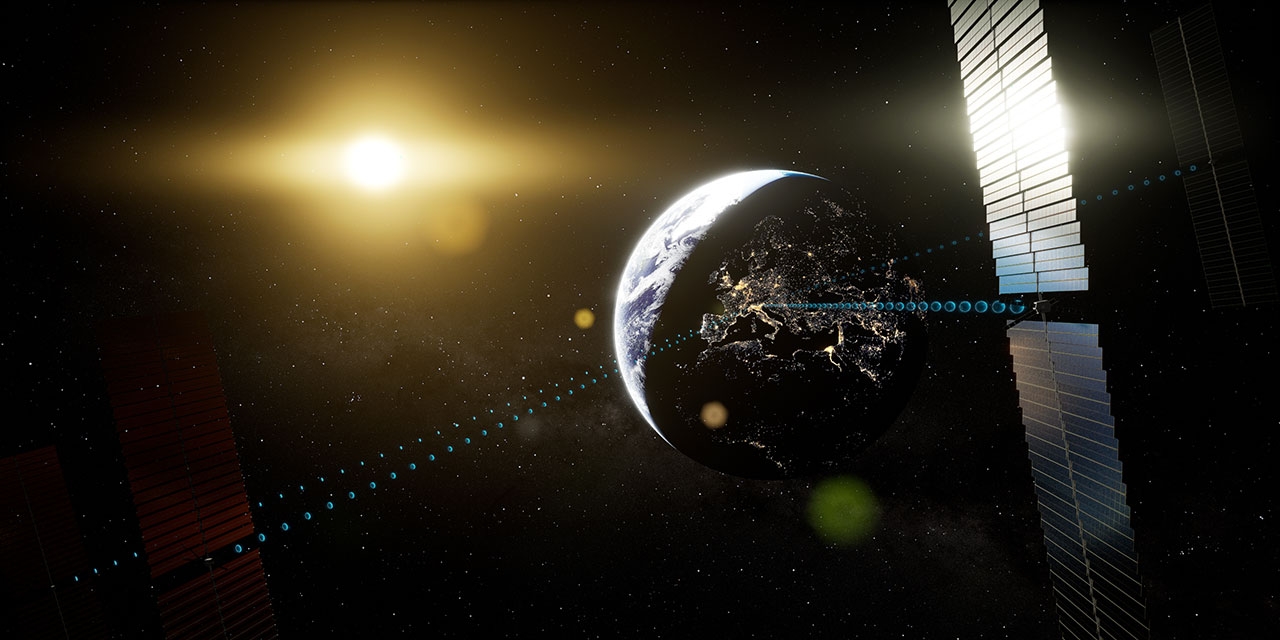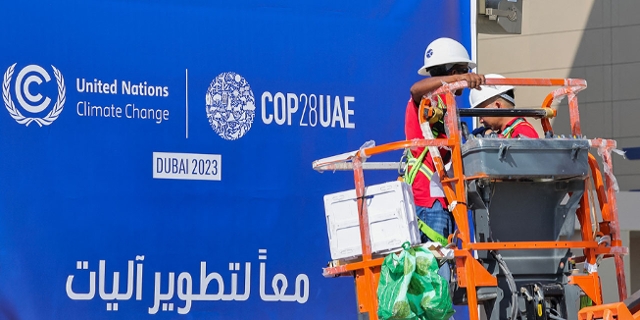Can Solar Farms In Space Solve the Climate Crisis?
You’ll see ever more solar panels popping up in Austria – on former agricultural fields, on the roofs of buildings, even on lakes. But since land-space is limited why not build solar panels in space and then beam the energy down?
This idea was first mooted in science fiction at the beginning of the 20th century, but since 1970s engineers have been taking it very seriously. And now the cost of panels is coming down and the technologies of rocket transport and robotics are becoming more sophisticated; it could soon be economically feasible. Some advocates have claimed it could supply all the world’s energy needs by 2050.
The Chinese hope to have a demonstration project up and running by the end of this decade, some US firms are developing projects and here in Europe the European Space Agency is hot on their heels
I spoke to Sanjay Vijendran, who leads space-based solar project SOLARIS at the European Space Agency about this idea.
Chris Cummins: Why is space a good place to harvest our solar energy?
Sanjay Vijendran: Well, space is the place where we can access solar energy in its purest, most intense form, because up in space we are not encumbered by weather and absorption of sunlight by the Earth’s atmosphere or indeed the shadow of the Earth itself, so that we can get sunlight 24 hours a day, seven days a week. That’s 365 days a year of continuous sunlight at the maximum power that is available. We’d be able to use solar power in its most advanced form. And that’s really the benefit that comes from going out to space to get it.
OK, there are a few challenges to go through here: firstly, how do you collect that solar energy up in space?
So you have to think about taking a solar farm like you see in the countryside here on Earth and putting that whole solar farm up in space. So that’s really the big challenge here in terms of scale. If we want to create a solar power station in orbit to provide the power to the Earth, it needs to be large enough to compete with a typical large solar farm or nuclear power station or fossil fuel power station on Earth. So we’re talking about gathering enough energy to power a few hundred thousand homes. That requires a very large area up in space. It means building a satellite structure that is tens of kilometres long. That challenge is huge compared to anything we’ve done in space before.
How are you going to get all the material up there? I know it’s very expensive to get stuff up there in a rocket.
So the idea is to design a structure that is built of millions of individual identical parts that have been mass manufactured in a factory. So just like solar panels that build up the solar farm on Earth. We would do the same thing in space to have lots of flat-packed solar panels that are essentially identical. They would be put onto individual rockets, and then we would be launching lots of rockets to get all of this hardware up into space. They would be gathered then at the construction site in orbit around the Earth. We’d then have a fleet of robotic vehicles or spacecraft to be able to assemble all of these solar panels into a single large structure, much like we would do on Earth by hand with human workers in a solar farm on the ground. We’d do it without astronauts, who would be much more expensive. Instead we would try to use the latest robotic technology to do this fully, autonomously in orbit.
A lot of hope in terms of getting material into space was linked to the success of the latest Elon Musk Space X rocket launch this month. But that rocket exploded. Is that a setback for this whole concept?
Actually, that was a huge step forward, not only in terms of the explosion itself, but the fact that Space X was able to launch and successfully fly for quite some minutes to a high altitude - it was the largest rocket that has ever been built by humanity. And so that was considered a big step forward because it shows that we are on a good path towards building huge rockets that can eventually reliably fly very regularly. That will dramatically bring down the cost of taking hardware up into space. This is really fundamental for large space projects like space based solar power where huge amounts of material, thousands of tons of material need to be taken into orbit.
There’s the challenge of getting the stuff and building it up in space, but how then do we get it from space to our homes, our factories, whoever it needs to use that energy here on earth?
So that’s the real trick here. We have to do it wirelessly. So we need to convert it into radio frequencies, just like we find frequencies or communication signal frequencies, and then send that down in a directed beam to a receiver on the earth. It will be a fairly large receiver - a few kilometres across, out in the countryside somewhere. That is the new technology that really needs to be shown that it can be done at a large scale. We know how to do wireless power transmission, but to do that at the scale of thousands of kilometres, efficiently is something that needs to be eventually demonstrated in practice to show that it can work. That’s essentially the technology we need.
I’ve heard some scientists suggesting that maybe up to 90% of the energy might be lost between the satellite, the solar panels in space and the receiver on Earth. What do you say to that critique? They’re saying that’s unfeasible because so much energy will be lost.
Energy will always be lost. We believe we can get an end to end efficiency from sunlight to electricity in the grid of something like 10 to 12%. Now that means that almost 90% is lost, as you say. But the good thing is the sun doesn’t send us a bill for the energy. We don’t pay for the sunlight itself. So as long as we can produce enough energy to sell, that pays for the cost of putting the systems into orbit and maintaining and operate it, then we can make a profit and it becomes commercially viable. So what that means is that, yes, we can accept 90% loss of energy.
There are cost-benefit calculations to be made, environment costs and benefits and economic ones. Shall we start with the economic one? Can you persuade me this is financially viable?
We did two cost benefit studies with our European industry last year at the European Space Agency to understand how much this might cost and what the benefits would be in the context of contributing to net zero. Essentially. they said that in the best case, the cost could be something on the order of €50 per megawatt hour, which is similar to what terrestrial solar and wind costs today to produce. And in the worst-case scenario, it could be up to around €200 per megawatt hour of electricity. This is similar to the cost of nuclear power today, which is more expensive than intermittent terrestrial wind and solar. But we are hopeful to make it cheaper. Through the mass production of our systems and learning factor that we get, it is expected these costs would eventually further fall and become in the long term, similar to the cost of producing solar power down on the surface of the Earth. But with the key difference that this would be firm continuous power.
What about the calculation about the carbon costs of getting all the infrastructure built?
In about 2005, we did some assessments on the carbon payback time, assuming that all the hardware was carried by the rockets fueled by fossil fuels. Then the answer came back to that it was less than a year out of the 30 years of operation of such a satellite to safely pay back the carbon cost of building and launching and operating these systems.
How soon could we see a solar farm in space?
For decades we knew what to do technologically but it was difficult to foresee an economic case for space-based solar. This has really changed fundamentally in the last ten, 15 years with the advent of reusable rockets, reducing launch costs and the mass production of space hardware in factories, that has really brought down the cost of producing the hardware itself. So now we think that in the next ten or 15 years, the economics is really going to work out once we have all these new technologies to employ. And we can see a path in the next decade where these will be all available to be put towards such an ambitious project as this.
People might say, hey, we’ve got a tried and tested renewable energy, solar plants on the ground, wind energy on the ground. Wouldn’t it be better to spend the engineering development money on dissecting those rather than looking for an untried, untested project in space?
Well, because of the seriousness of the climate crisis and the timeframe that we have, we really think we need to explore all possibilities out there. And today we don’t have solutions that are going to guarantee us getting to net zero with the technologies that we have. Yes, we have some useful technologies like solar and wind and hydro and nuclear, but they cannot on their own provide us that completely green and reliable grid that we need. So it’s pretty important that the world explores all, all possibilities towards a green future. And this should include space based solar power as well, because we don’t know what is that final energy mix solution that will ultimately get to that successfully.
Publiziert am 28.04.2023





















